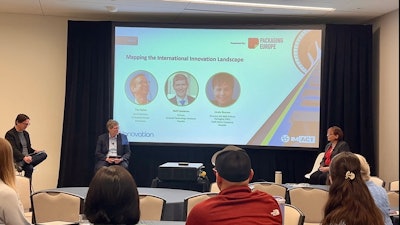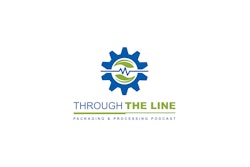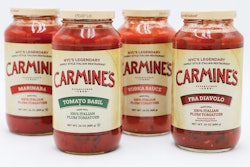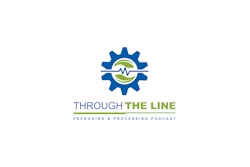At SPC Impact in Seattle yesterday, Linda Roman, Director of Packaging at Kraft Heinz, said “innovation is mandatory if we are going to solve the challenges with sustainable practices.” Roman, who sat on a panel to discuss the regulatory, technological, and business factors that shape the modern landscape of sustainable packaging innovation, leads a team at Kraft Heinz focusing on technology and partnerships across the entire value chain, to help drive ESG growth and innovation objectives for the company.
Panelist Neil Cameron, a Partner at Emerald Technology Ventures, said when it comes to sustainable packaging, “now is what matters.” Emerald’s focus is on making packaging investments in six areas: Low-footprint, smart packaging, “life-friendly design”, forward-thinking, connected packaging, and new business models. “We’re constantly looking at how to make things scalable on a global basis,” he said.
The Investor’s Perspective
The first question to ask when considering a new technology, said Cameron, is: Does it work? The second is: How much does it cost? And finally: Does anybody care? He also said that when investing in this space, it’s a two-step process: invest in technology to see if it works, then figure out how to sell it at scale. Access to market is huge, and start-ups need big partners, access to infrastructure, and capital, to scale. Waste management systems that allow the circularizing of packaging are also crucial. “These aren’t easy solutions, and they often require government support to offset initial costs,” he said. Also, Cameron pointed out that the scalability of innovations in North America is impacted by the fragmented approach to waste management infrastructure and regulatory conditions, whereas in Europe there is more harmonization, making it easier to implement sustainable solutions across the region.
Cameron mentioned a few examples of companies he believes are leading the way in innovation, and he attributed collaboration as the key to success:
- Vytal Global, a company focused on reusable packaging for QSRs (Quick Service Restaurants). Vytal has created a system for reusable packaging that has scaled across Europe and is now expanding in the U.S. Their partnership-driven approach is the key to their success.
- Paptic is a Finnish company that’s developed a cellulose-based paper that claims to be stronger and more flexible than traditional Kraft paper. This material can be used multiple times and has been backed by several corporate investors.
- Phase Change Solutions, based in North Carolina, has developed a phase change material (PCM) made from sustainable, bio-based materials. This material absorbs or releases energy at specific temperatures, which makes it usable for temperature-sensitive products like vaccines or food.
From the Brand Perspective
When looking at the challenges of evaluating new innovations, Roman said that because the company has over 200 iconic brands, “we operate across different temperature states and have diverse packaging needs. We can’t find a one-size-fits-all solution, so we work across many networks to identify different technologies that fit different sectors within our portfolio.” Barriers, shelf life, puncture resistance, and sealing are all crucial elements when examining new packaging materials.
When looking for new innovations, success is unkown when Roman’s team is working with new technologies - which in some cases in the early stages have low numbers on the tech and readiness level (TRL) – so having more than one pathway or more than one parallel approach to the same application is key. Collaboration with the innovating material company is critical, as is externally working with innovators, startups, universities, institutions, and government organizations such as the National Renewable Energy Lab. Roman said her team “scours the globe” to identify solutions, and works with organizations like these and also venture capital companies to find new innovations.
Cost is also a challenge to scalability, and because cost is higher in the early stages of development and implementation, it is imperative that startups have a path to cost neutrality and show the opportunity to include the benefits of a sustainable solution and a plan for “how do you get it to a point where we can afford it,” said Roman.
She also added that Kraft Heinz is working with organizations including the Recycling Partnership and the Flexible Packaging Coalition to help develop the infrastructure needed to recycle the company's packaging, to influence standards and ensure that the materials they’re working with have a clear end-of-life destination.
Costs, infrastructure, and regulatory fragmentation are all challenges that remain, but both Roman and Cameron acknowledged the importance for collaboration between brands, startups, investors, government organizations, and NGOs when developing new innovations in sustainable packaging.

























